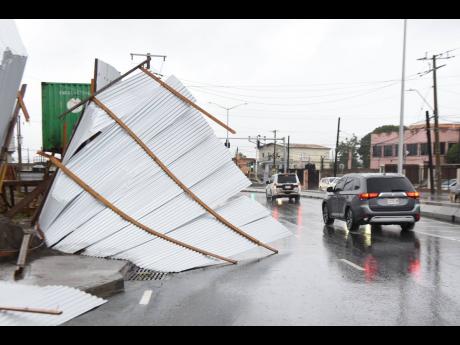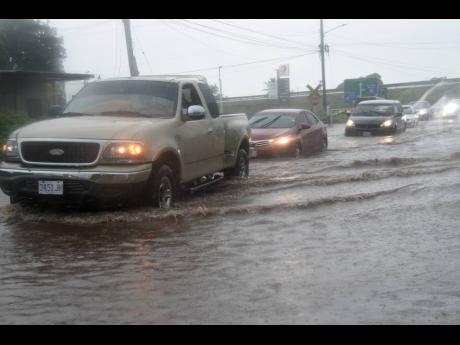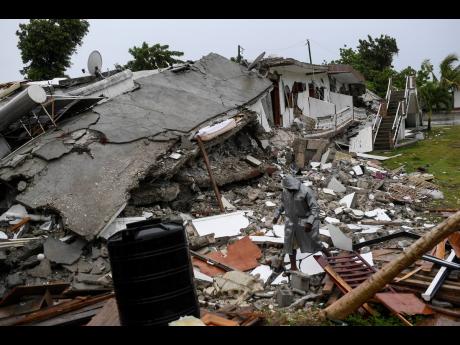It’s geography, stupid
Science explains series of regional natural disasters
About 7:30 a.m. on Saturday, August 14, Jamaica was jolted by a magnitude 7.3 earthquake. It turned out that it was a regional shake-up, and that there were severe losses of life and property in Haiti. Shortly after, social media were replete with posts declaring that Jamaica was spared the “wrath” that befell Haiti because Jamaica is a God-blessed country.
This sort of argument has been bandied about every time a natural disaster spared or bypassed us, as there is a local school of thought whose students believe that the natural disasters occurring in Haiti are punishment for the voodoo that is practised there. The debates for and against this illogical perspective are unending. However, the fact is that hurricanes and earthquakes are geographical phenomena that are more likely to occur in certain places than in others, and are not vengeance sent from above.
For those who believe Jamaica is spared because this island is blessed, it is important to note that the blessings have been suspended several times, as we have been shaken, battered, bruised, and burned many times. In essence, this place that is said to have more churches per square mile than any other country has had its fair share of ‘punishment’, the most legendary of which occurred on June 2, 1692 at Port Royal.
At a few minutes to noon, the islet shook three times, the last time was the most vigorous. In less than 30 seconds, one of the “wickedest cities on Earth” was destroyed. Brick-and-stone buildings collapsed on to their occupants, the earth opened and swallowed people alive, while spewing out some who were long buried in the waterlogged soil. Two-thirds of the land and some dwellings crumbled to the bottom of the sea. There were several aftershocks, but it was the tsunami that followed that completed the annihilation. Survivors were tossed into the sea and drowned. About 2,000 people were killed.
While the bulk of the destruction was in Port Royal, the impact was felt all over the island, where there were hundreds of deaths, over 2,000 damaged buildings, many massive landslides, one of which blocked the Rio Cobre, and another that buried an estate in St Thomas, killing 19 people. St Ann’s Bay was crushed by a tsunami, which occurred after the quake.
Other notable shake-up of the island took place on August 29, 1722 and October 22, 1726. On October 20, 1744, a major hurricane and earthquake rattled Port Royal and Kingston. People aboard vessels in port felt the vigour of the September 1771 shake. The one that unfolded on October 3, 1780, based on folklore, was said to be a retribution that was as swift as it was apocalyptic. According to the The Wanderling, an online site, “An Obeahman that went by the name of Plato the Wizard terrorised people, both black and white, throughout the parish of Westmoreland. He declared that anyone who dared touch him would suffer extreme physical and spiritual torments. He was captured by the authorities and taken to Montego Bay and condemned to death. He prophesied that his death would be avenged within a year by a storm that would ravish the whole island.”
A violent storm and tsunami actually manifested themselves, the jailer died within the year, and “the governor (Colonel John Dalling) reported that there were earthquakes as well … and that the quakes totally demolished every building in the parish of Westmoreland and that remaining inhabitants were faced with famine”.
Another cataclysm took place on January 14, 1907 in Kingston. At 3:30 p.m. three shocks occurred in 20 seconds. It is said every building was damaged and those in the lower part of the city were shattered, the falling bricks killing hundreds of people. A fire that soon broke out sent the commercial area up in flames, leaving £2,010,000 in property damage.
Fifty years after the fall of Kingston, the island was scrambled again on March 1. Three people were killed, and another piece of Port Royal slid into the sea. Western parishes got the worst of it, however. Electricity, light, water and telegraph supplies were interrupted. And talking about divine interventions, churches in Montego Bay cracked and crumbled.
The strongest quake in recent memory took place on January 13, 1993. It had a magnitude of 5.4, 32 aftershocks, and was said to have caused significant damage in St Andrew and Kingston. Two days after the August 14 tremor, the Earthquake Unit at The UWI reported that a 3.1-magnitude quake hit sections of the island in the afternoon.
And according to Professor Simon Mitchell, seismologist and research director at the Earthquake Unit, another major earthquake is imminent. He was quoted in The Sunday Gleaner of August 15: “Yes, we are at risk of a major earthquake because this quake, just like the one in Haiti 11 years ago, is on the same fault line that runs along the south-west of Haiti and comes into Jamaica.” It seems then that God-blessed Jamaica, too, is in line for a major punishment from above. Not at all. It is just regional seismology, stupid.




